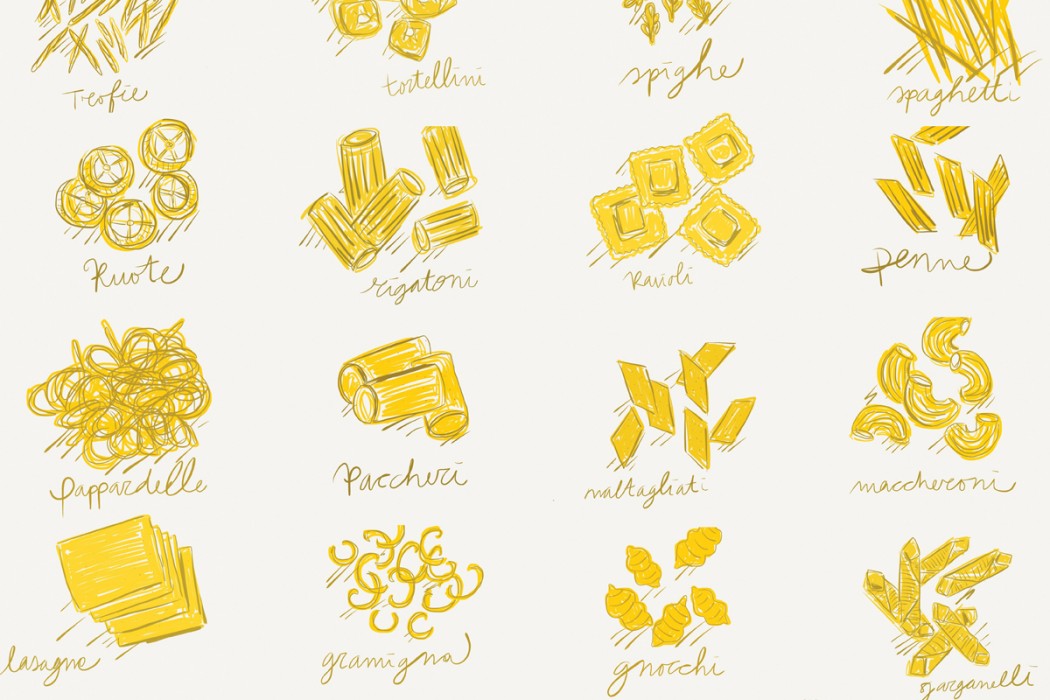Did the Italians really invent pasta or is it true that Marco Polo brought it over from China?
This question irritates the Italians as much as other such statements, like claiming that Christopher Columbus was Spanish and not Italian (as the Spaniards say) and that it was Alexander Bell and not Antonio Meucci who invented the telephone (as the British like to say).
I mean really. Would you now like to say that the Mona Lisa was painted by someone other than Leonardo? Give back to Caesar what is Caesar’s, said Jesus (and by that I really mean Jesus, not just anyone). If it’s true the Chinese kneaded dough into the well-recognised long string formation, how come spaghetti is much more famous than noodles all over the world?
Someone says pasta was already known to the Etruscans; maybe it’s true, maybe not. But for sure pasta was known and consumed in Italy way before Marco Polo came back from China. In 1279 a basket of dried pasta called macaroni was discovered in the inventory of a Genoese soldier and this was considered to be a valuable asset. If the Marco Polo legend still has its followers the fault is of the Americans. In a 1938 movie entitled The Adventures of Marco Polo, Gary Cooper points to a plate of spaghetti and asks a Chinese person what it is. Chinese - I ask you! Pasta comes from a kind of wheat called durum (Triticum durum) while ordinary flour comes from Triticum vulgarum. The result is a much firmer kind of pasta, which keeps its firmness even when cooked (if properly cooked). Durum wheat was better cultivated in Sicily and Campania, thanks to the sun and the warm climate and that’s why the pasta industry flourished there. In particular, the air of Naples was perfect for drying pasta: mild sea breezes combined with hot air from Vesuvius made the pasta not too soggy, nor too hard. The number of pasta shops in Naples grew from 60 to 280 between 1700 to 1785.
When Englishmen in the 18th century began undertaking the Grand Tour and visited Naples, they found pasta hanging to dry everywhere on the streets, on the roofs, on balconies. Pasta was sold as street food by vendors and customers did not bother to use a fork to help themselves.
Pasta became diffused the world over and if today, the US is the second biggest country (after Italy) for pasta consumption it’s thanks to the Brits and the French, more than to the Italians.
The first American pasta factory was opened in 1738 by a Frenchman in Philadelphia and pasta went from being a chic food which rich Americans imported from Sicily, to a simple one available to the working classes.
Not that the Yanks had any idea about how to cook it properly: boiling it for at least half an hour (yes, my Italian friends, it’s enough to send shivers down your spine, isn’t it?) and baking it with cheese would have made this pasta a kind of mash we, in Italy, would rather give to chickens. But macaroni cheese was born, brought by the English to the American colonies and regularly on the menu of many American restaurants. In the US and more or less in other European countries, pasta had a surge in popularity with the rise of Italian immigration. Italians didn’t find the food of their new countries very appealing and tried hard to import their pasta made from durum wheat directly from Italy, even though it would have been easier to use local resources due to their poverty. They insisted on growing vegetables and herbs that others considered had no nutritional value and mix them with their pasta. Despite the manifesto drawn up by the Futurists who wanted to abolish pasta in favour of the more manly rice – which worried the Americans so much they sent a telegram to Mussolini - the Duce did not listen to the Futurists and encouraged the cultivation of durum wheat even in the northern regions of Italy, where factories used electric tunnels to dry pasta in the absence of the southern sun and breeze.





